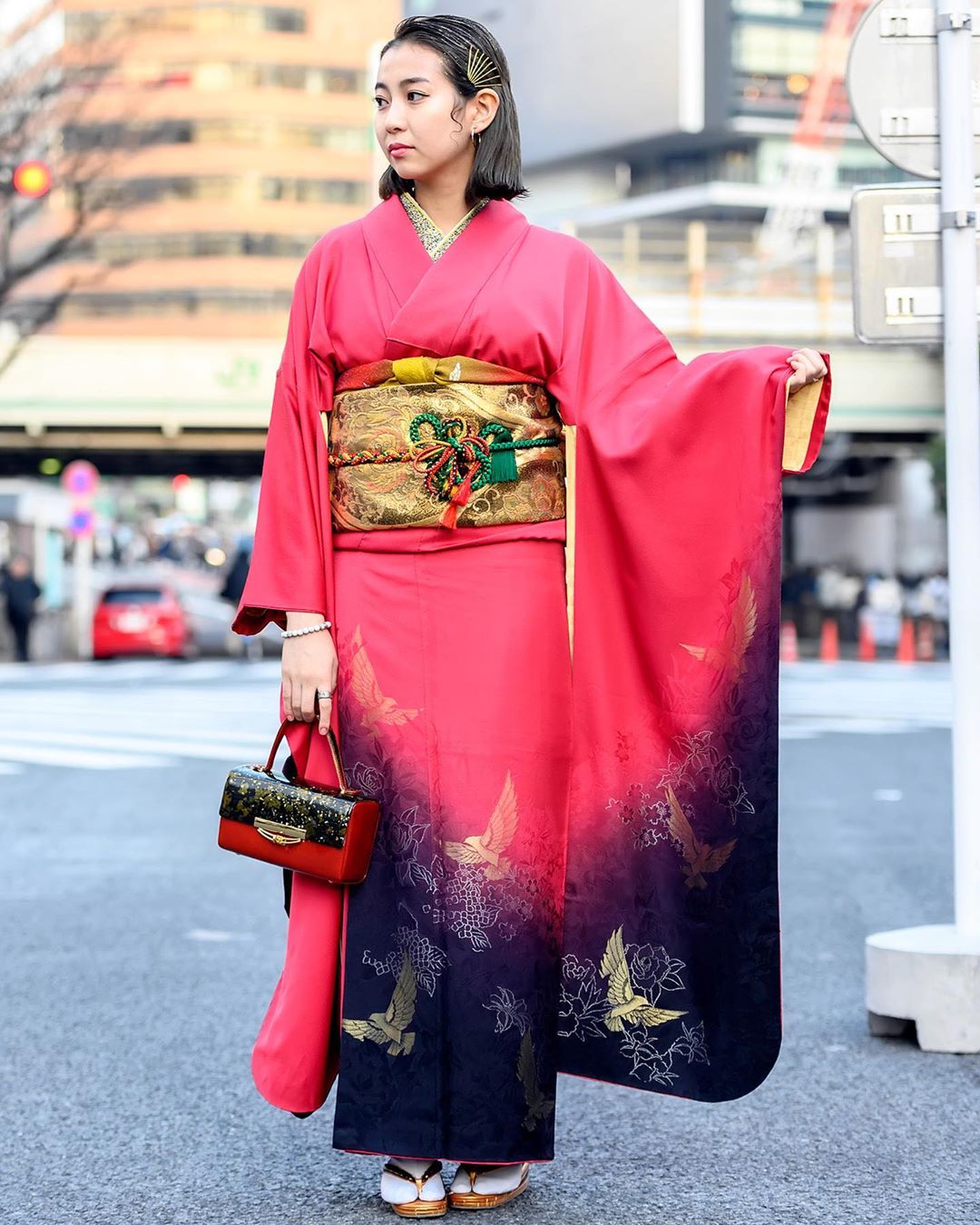
Tokyo Fashion Traditional Japanese furisode kimono on the streets of Shibuya, Tokyo on Japan’s
Make sure to wear a formal kimono like a homongi, furisode, irotomesode with a wide fukuro obi belt (find out more about different types of traditional kimono). Most formal kimono have a very light color and obi have gold and silver woven into the pattern. If you don't own a formal kimono, try to stay with light colors and bring gold or.

Coming of Age Day in Japan Kimono Pictures 2014 Coming of age day, Coming of age, Kimono
Children wear kimono for the Shichi-go-san (7-5-3) festival, which celebrates children's growth at the ages of seven, five, and three; many women wear furisode to celebrate Coming-of-Age Day the year they turn twenty; and some brides still choose to dress in the traditional all-white shiromuku ensemble for their wedding. Wearing a kimono is.

Morning Hope Seijin no Hi // Furisode Galore
1. Hold the center and the short lines of kake-eri on the collar called kake-erisen. Pull the collar to both sides to straighten the grain lines of the collar. maikichi It's important to straighten the fabric grain throughout putting on. If you fold all parts exactly, you can wear nicely.
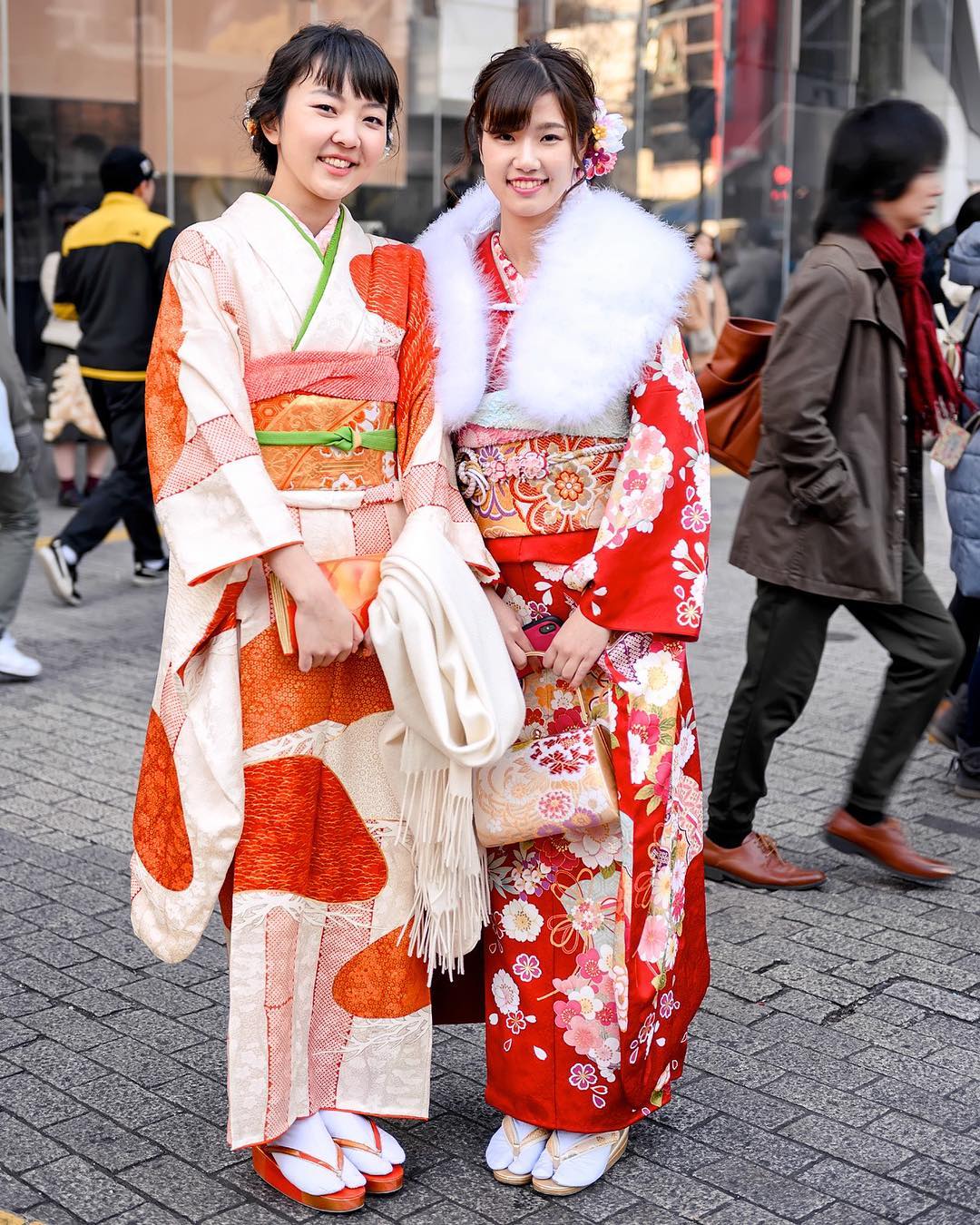
Tokyo Fashion Beautiful traditional Japanese furisode kimono on the streets of Shibuya, Tokyo
A furisode kimono is a type of kimono that is worn by unmarried women in Japan. It is the most formal type of kimono, and is often brightly colored and elaborately decorated. Furisode kimonos are worn with an obi, or sash, that is tied in a very complicated way. Furisodes are Japanese expressions that mean'swinging sleeves.'

Yusuke Japan Blog Furisode is just for women who are not married
・Furisode - This is the type of Japanese kimono worn by younger, unmarried women and girls. It is distinguishable by its long sleeves and often comes in bright colors. Furisode is the typical kimono worn during Japan's Coming of Age Day ('Seijin no Hi'). ・Tomesode - A formal kimono that's worn by women who are married.

Harajuku Japan on Instagram “Traditional Japanese furisode kimono on the streets of Shibuya
Select your favorite furisode and fukuro obi, and prepare all items. When you begin kitsuke or putting on kimono, the first thing you have to do is preparation. It is very important because you need many kitsuke komono accessories. Stack up furisode, obi and accessories in.
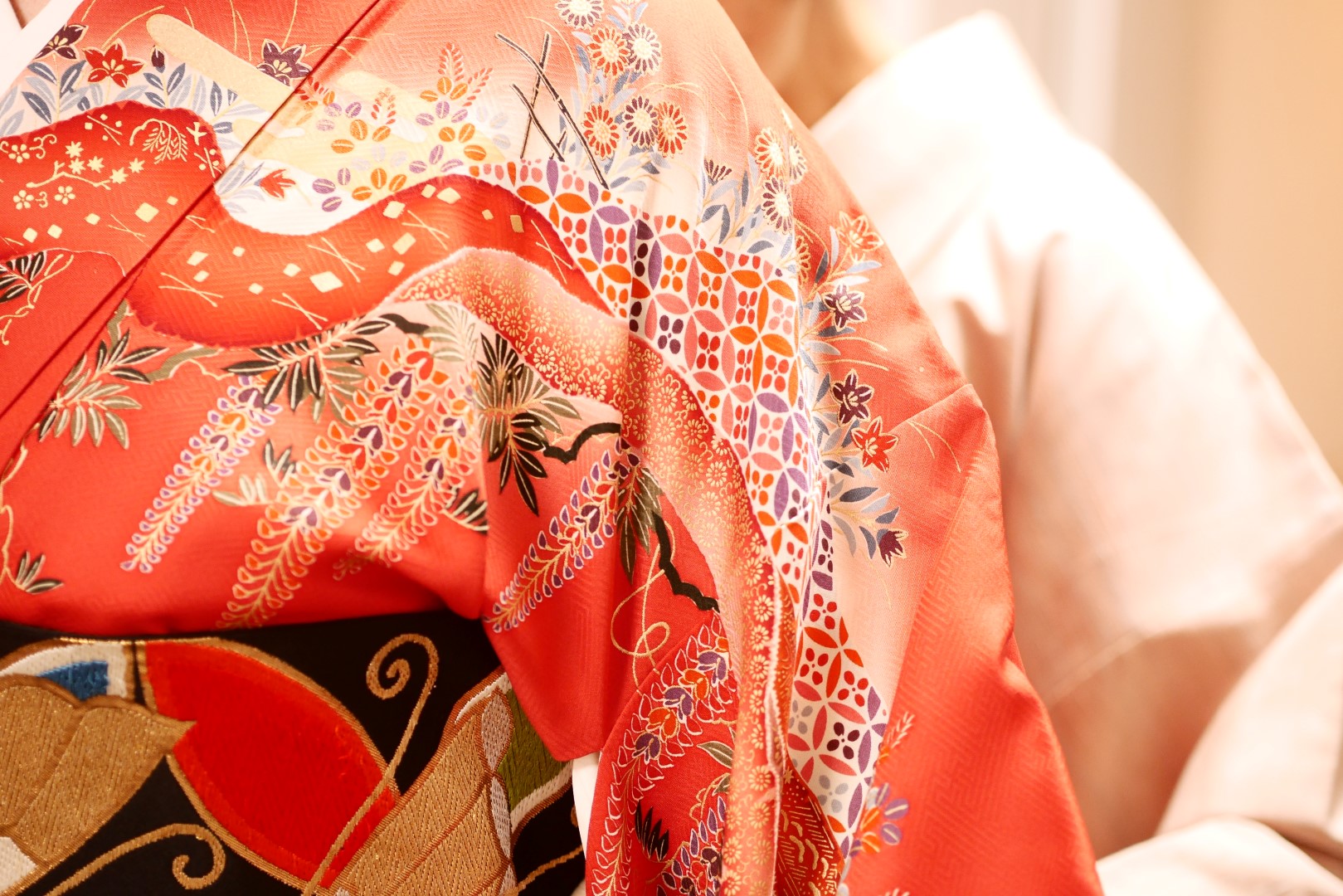
Furisode or formal Kimono rental in Tokyo Harajyuku ¥50000 all inclusive system
To wear a furisode kimono, first put on a kimono undergarment called a juban. The juban will help keep the furisode kimono in place and prevent it from slipping off your shoulders. Next, put on the furisode kimono itself, starting with the left side and then wrapping it around to the right.

How To Wear Furisode Kimono Visit Nagasaki
Definition The kanji for furisode literally reads "swinging sleeve," which is appropriate, because a furisode is a traditional Japanese kimono with long, hanging sleeves. The lengths of the sleeves depend on the style of the furisode, which will be discussed a little later. Historically, furisode were worn by young children of the wealthy.
!Carpe Diem! about Japanese culture
A furisode is a type of kimono generally worn by young women. It is often worn at coming of age ceremonies, weddings and other events. It's a little difficult for someone who is not used to seeing kimonos to distinguish between a furisode and other kimonos. The unique characteristic of a furisode is the length of its sleeves.

ANIME ART kimono. . .furisode. . .obi. . .traditional wear. . .short hair. . .hair decoration
Classification and special features For unmarried women, the furisode is the most gorgeous type of formal dress that can be worn in festivals and in other formal scenes. The most striking feature of the furisode is that the dangling part of its 'sode' (sleeves) are quite long.
Japanese Kimono Set Furisode Kimono Set Japanese Traditional Long Sleeved Costume for Adult
A furisode is a style of kimono that can be worn in the coming-of-age ceremony which is called Seijinshiki. The furisode originated in the mid-1500s as middle and upper-class children's clothing for both sexes, and at that time it was not worn by adults. At first, furisode had quite short sleeves and were used as everyday wear.
furisode
A furisode ( 振袖, lit. 'swinging sleeves') is a style of kimono distinguishable by its long sleeves, which range in length from 85 cm (33 in) for a kofurisode (小振袖, lit. 'short swinging sleeve'), to 114 cm (45 in) for an ōfurisode (大振袖, lit. 'large swinging sleeves').

Coming of Age Day in Japan 2015 150+ Kimono Pictures Japan fashion, Coming of age day
Put simply, 'kimono' ( 着物) is the generic name. It's literally 'something you wear'. A 'furisode' is just 1 style of kimono, out of many, and we'll focus on it for this post. In Japanese, the word 'furisode' ( 振袖) means 'swinging sleeves'. The first kanji, 'furi' ( 振 ), is the 'swing' bit, and 'sode' ( 袖) is the word for sleeve.
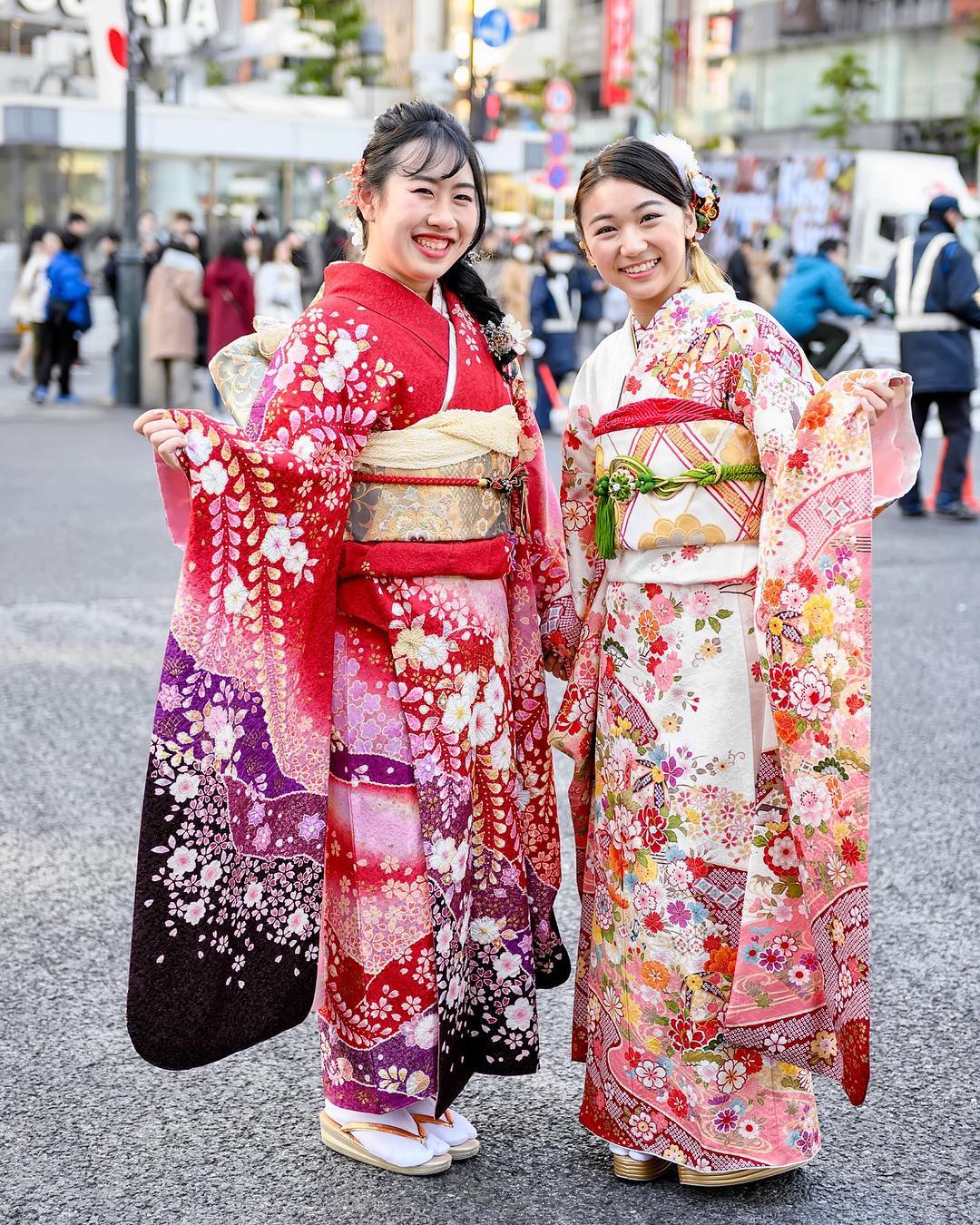
Tokyo Fashion Beautiful traditional Japanese furisode kimono on the streets of Shibuya, Tokyo
The length of kofurisode sleeves : from 76cm to 86cm. also called nisyakusode. Women wear ofurisode as bridal costume and tyufurisode is for a coming-of-age ceremony, graduation ceremony, and party. These days,women's height is getting taller,so ofurisode is often worn. Pure white furisode for bride and utikake is categorized as ofurisode.
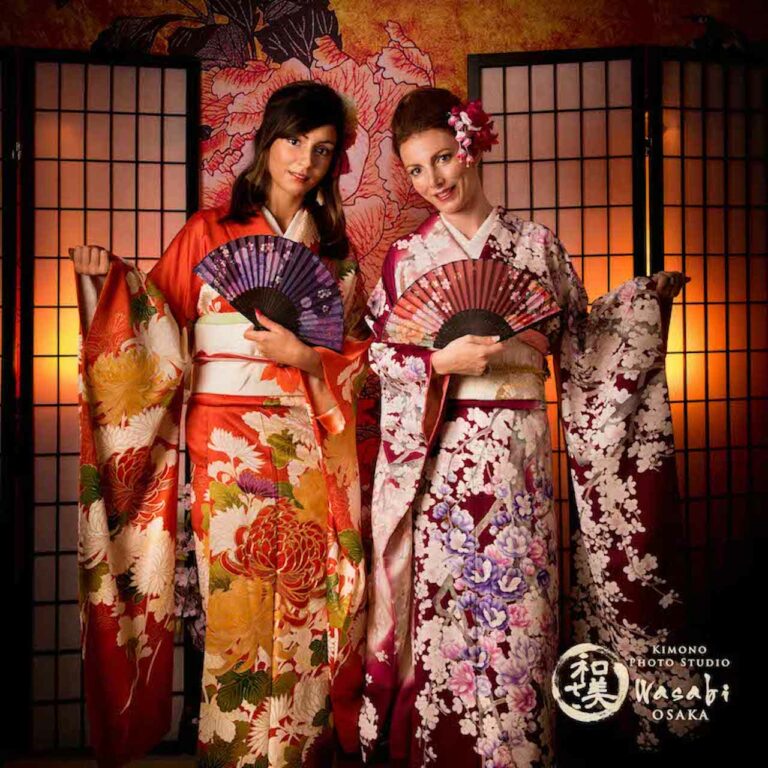
What’s the difference between a kimono and a furisode? Kimono Photo Studio Wasabi Osaka
The term 'Furisode' meaning 'swinging sleeves' which refers to the unique extra long style of sleeves found only on this kind of ceremonial kimono. The graceful elongated swinging sleeves give it a unique fashion for a formal style for Japanese young women. In the design, the inner liner may show on one or both open sides of the edges.
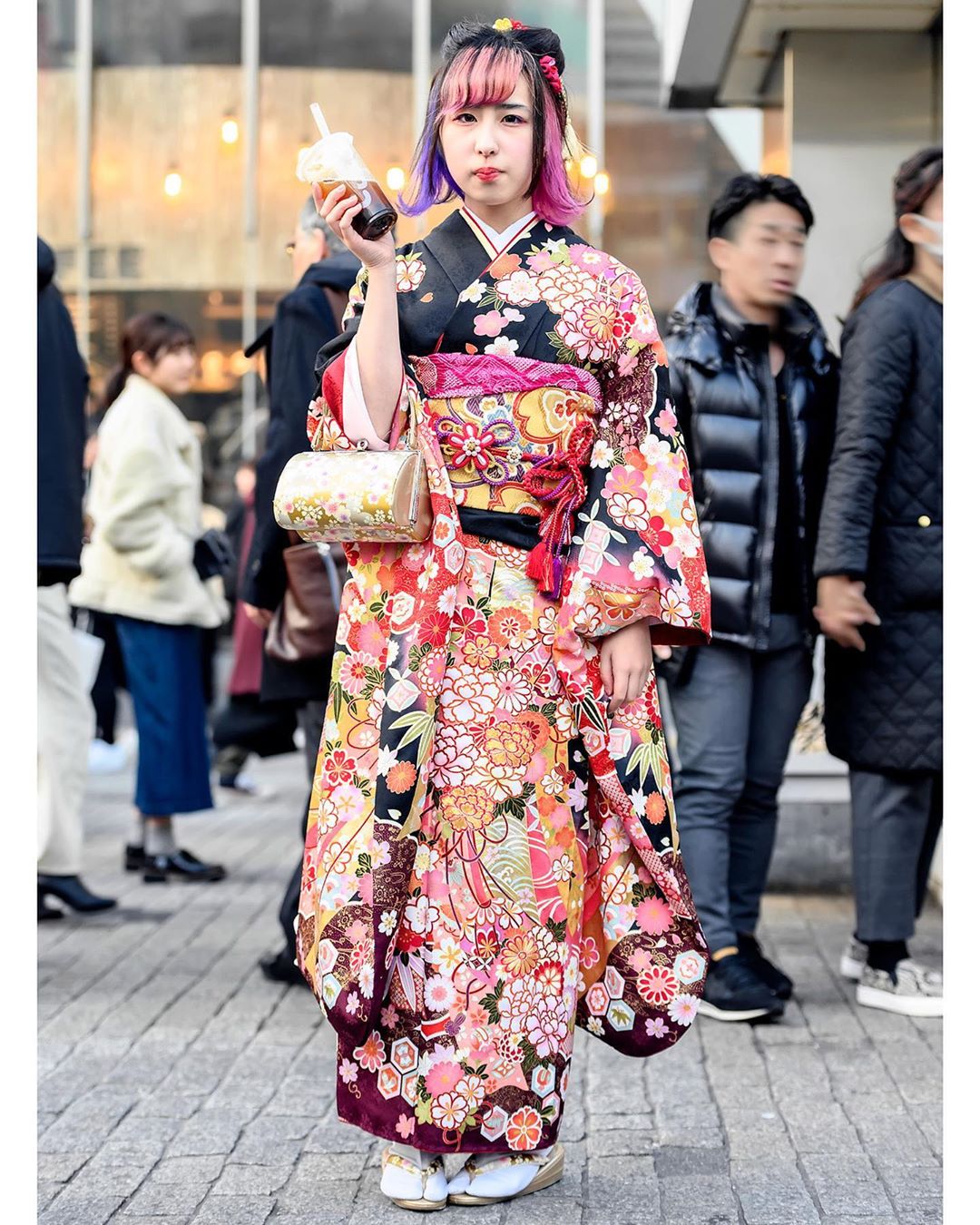
Tokyo Fashion Traditional Japanese furisode kimono on the streets of Shibuya, Tokyo on Japan’s
Things you prepare They are required for wearing furisode and tying bunko. Tabi socks Hadajuban and susoyoke underwear / kimono slip Towels (padding) Haneri collar Erishin collar stiffener Kasane-eri collar Nagajuban for the furisode 3~5 himo (munahimo, koshihimo, karihimo) Furisode Korin belt 2 datejime sash Obiita board Fukuro obi